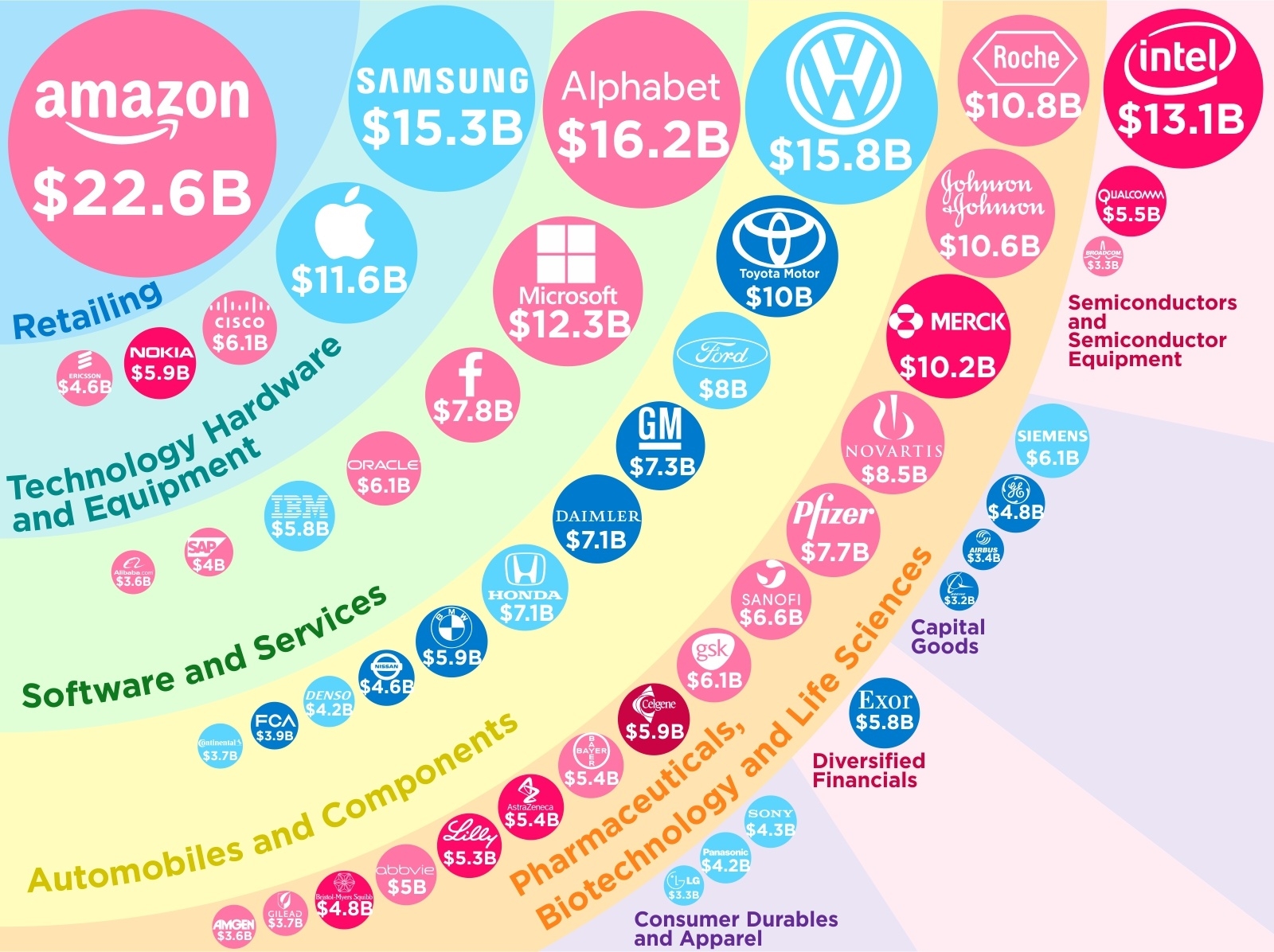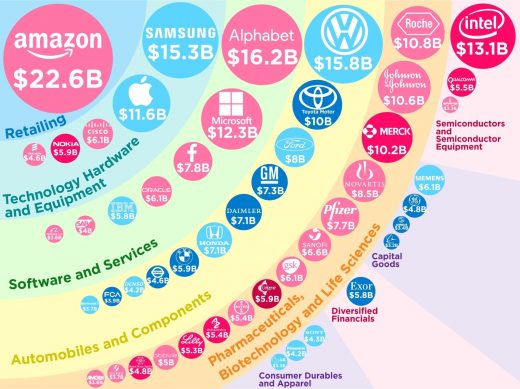3 Innovative Companies Who are Nailing Agile Leadership
— July 30, 2019

We don’t have to look far to find examples of innovation, whether it’s in the technology sector, consumer goods or manufacturing.
Apple, Amazon, Spotify, The Washington Post, Square and others make the short list of the most innovative companies year after year. While pioneering a unique product or service is certainly part of the equation, what allows these companies to sustain that success over time really comes down to agile leadership.
Leadership agility is the ability to effectively balance three factors that drive performance – people, process and innovation.
For a closer look at agile leadership in practice, let’s examine how three of America’s most innovative companies have adapted to a changing marketplace to rise above the competition time after time.
3 Innovative Companies Who are Nailing Agile Leadership
Amazon: Advancing Adaptation and Efficiency Simultaneously
From books and electronics to cloud computing and artificial intelligence, Amazon has its hand in just about everything. Amazon Web Services is a multi-billion dollar provider of cloud-based services, and the company’s Alexa AI assistant service is being built into everything from refrigerators to vehicles.
Amazon’s success is largely a credit to CEO Jeff Bezos’ obsession with customer loyalty, efficiency, and adaptation. It could have stuck to its core competency of selling books online, but as e-commerce evolved, Bezos made sure its offerings did, too. The company also made sure that as it made changes, efficiency and customer service would remain a priority. Many companies have made the mistake of focusing so much on technological advances at the expense of keeping their products efficient to produce and use and are cost-effective. Bezos refused to let Amazon fall into this trap, opting to focus on advancing innovation and efficiency simultaneously. He pushed his team to find new ways to use technology to improve delivery times. As a result, Amazon has invested heavily in its own fleet of drones to be able to deliver products in less than two hours.
Amazon has shown it’s possible to balance two conflicting priorities. The key is to take a systems view of the organization to understand how these areas are related and put forth a dedicated effort toward each. One way to achieve this is by creating a cross functional team comprised of all the key stakeholders holding them accountable for communicating and coordinating their efforts.
Spotify: Redefining the Nature of Streaming
Once an underdog, Spotify has taken the media streaming world by storm with carefully curated content and resources, all under the guidance of Troy Carter. Carter entered the company as global head of creator services in 2016 and found Spotify was already moving pretty fast. Agile from its conception, Spotify boasts unique, data-powered features like Discover Weekly, Fresh Finds, and Release Radar. These personalized playlists captured listeners by the millions with “freemium” music, videos, and podcasts.
Carter has kept the ball rolling by finding new ways to serve artists. Using advanced data-collecting software, new tools are created to connect creators with their audiences, building an engaging experience for listeners and sales for artists.
Approaching the competitive industry with an adaptable leadership style, Carter is expanding Spotify’s partnership with record labels by boosting artist initiatives through projects like Secret Genius, Rise, and RapCaviar Live. All three modules highlight artists specific to individual users’ tastes within Spotify.
Netflix: Conquering the Digital Content Sphere
Netflix is most famous for putting home video rental service Blockbuster out of business, but it has competition of its own in 2019. To stay one step ahead of Amazon Prime Video and Hulu, the online streaming service has invested in creating its own original content, acquiring an enormous number of distribution rights, and developing a choose-your-own adventure program within movies.
Available on mobile devices as well, Netflix specializes in catering to niches and providing content for every demographic. Even though the company remains safely in first place in the streaming platform race, its internal teams work voraciously to stay ahead of the game.
This drive can be credited to the fact that leadership is known to treat its employees well. For the most part, Netflix workers are satisfied with their jobs, enjoying impressive pay and benefits with opportunities to grow within the company. Team leaders focus on building trust with their reports and keep a regular circle of feedback. No company is perfect though, and some employees have commented on burnout due to the nature of their work.
The most successful leaders keep a close eye on the marketplace and invest in innovation while ensuring it doesn’t come at the expense of either employee engagement and motivation or product reliability and process efficiency.
Fortunately, you don’t need to be a tech giant to achieve this balance. Agile leadership is a skill that can be developed and utilized to drive your business towards success.
Business & Finance Articles on Business 2 Community
(56)


